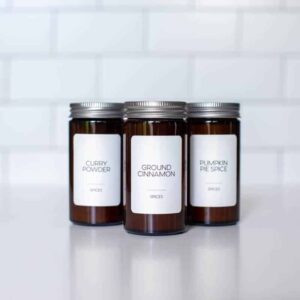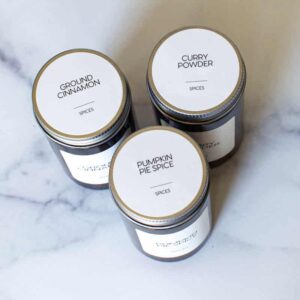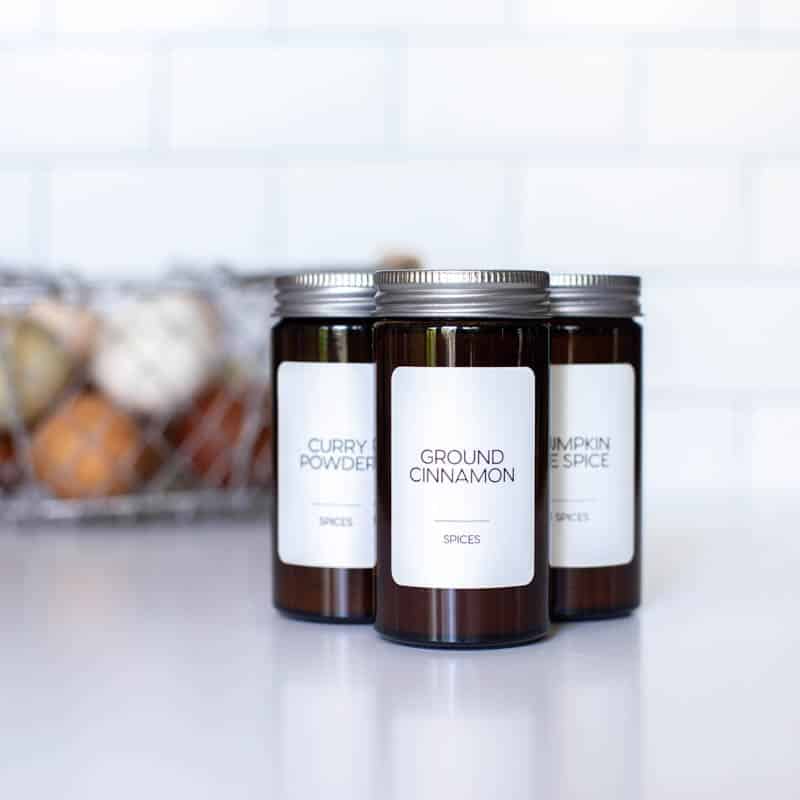How To Refresh Your Spice Cabinet

Is it Time to Refresh Your Spice Cabinet?
When was the last time you checked the expiration date on your spices? If you’re like many people, it may have been a while. But did you know that spices can lose their potency and flavor over time, making them less effective in seasoning your food? Here’s what you need to know about checking the freshness of the spices in your spice cabinet.
Why Check Your Spices for Freshness? Spices are an essential part of any cook’s pantry, adding flavor and depth to dishes. But just like any other ingredient, spices can go bad over time. When spices are exposed to air, heat, and light, they can lose their flavor and aroma, making them less effective in seasoning your food. Old spices may also contain mold, which can cause health problems.

How Long Will Spices Stay Good?
The shelf life of spices varies depending on the type of spice and how it is stored. Ground spices generally have a shorter shelf life than whole spices because they have a larger surface area exposed to air and can lose their potency more quickly. Here are some general guidelines for how long different types of spices can stay fresh:
Whole Spices:
- Whole peppercorns: 4 years
- Whole cinnamon sticks: 4 years
- Whole nutmeg: 4 years
- Whole cloves: 4 years
- Whole cumin seeds: 4 years
- Whole coriander seeds: 4 years
Ground Spices:
- Ground cinnamon: 2-3 years
- Ground nutmeg: 2-3 years
- Ground cloves: 2-3 years
- Ground cumin: 2-3 years
- Ground coriander: 2-3 years
- Ground paprika: 2-3 years
- Ground turmeric: 2-3 years
Dried Herbs:
- Dried basil: 2-3 years
- Dried oregano: 2-3 years
- Dried thyme: 2-3 years
- Dried rosemary: 2-3 years
- Dried parsley: 1-3 years
Spice Blends:
- Curry powder: 2-3 years
- Chili powder: 2-3 years
- Italian seasoning: 1-2 years
- Pumpkin pie spice: 1-2 years
- Taco seasoning: 1-2 years
It’s important to note that these are general guidelines and spices can lose their potency and flavor more quickly if they are exposed to light, heat, or moisture. It’s a good idea to periodically check the smell, taste and appearance of your spices to make sure they are still fresh and flavorful. If you notice that your spices have lost their potency or have a musty or stale smell, it’s time to replace them.

Are My Spices Still Good? Here’s What to Look For:
- Check the expiration date: Most spices have a shelf life of about 1-3 years, depending on the type of spice. Check the expiration date on the container and toss out any spices that are past their prime.
- Look at the color: Spices should be vibrant in color, and if they have faded or turned a dull brown, it’s a sign they’re no longer fresh.
- Smell the spices: Open the container and give the spices a sniff. If the aroma is weak or nonexistent, it’s a sign the spices have lost their flavor and are no longer fresh.
- Taste a little: If you’re not sure whether a spice is fresh or not, taste a small amount. If it tastes bland or stale, it’s time to toss it out.
Tips for Keeping Spices Fresh
To keep your spices fresh and flavorful, follow these tips:
- Store spices in a cool, dark place: Spices should be stored in airtight containers in a cool, dark place, away from heat and light. Avoid storing spices above the stove, where they can be exposed to heat and steam.
- Use the right container: Glass jars with tight-fitting lids are the best containers for storing spices, as they don’t absorb odors or flavors.
- Buy in small quantities: It’s best to buy spices in small quantities and use them up within a year to ensure freshness.
- Grind your own spices: Whole spices retain their flavor longer than ground spices, so consider grinding your own spices as needed.
- Label your spices: Be sure to label your spices with the date of purchase and the expiration date, so you can easily keep track of their freshness.
Washing Your Spice Jars
When you replace your old spices it’s important to thoroughly wash your spice jars. The best way to wash your spice jars depends on the type of spice residue left in the jar. Here are a few methods you can try:
-
Soap and water: For most spice jars, the easiest way to clean them is to wash them with soap and water. Start by removing any remaining spices from the jar, then rinse the jar with warm water to remove any loose particles. Use a small amount of dish soap and a soft sponge or cloth to clean the inside and outside of the jar. Rinse the jar thoroughly with water and let it dry completely before adding new spices.
-
Baking soda and vinegar: If your spice jars have stubborn stains or residue, you can try using a mixture of baking soda and vinegar. Mix equal parts baking soda and white vinegar to form a paste, then use a soft sponge or cloth to scrub the inside and outside of the jar. Rinse the jar with warm water and let it dry completely before adding new spices.
-
Dishwasher: Some spice jars are dishwasher-safe, but make sure to check the manufacturer’s instructions before placing them in the dishwasher. If your jars are dishwasher-safe, place them in the top rack of the dishwasher and run a normal cycle with a mild detergent. Make sure to remove the jars from the dishwasher as soon as the cycle is finished to avoid any moisture buildup.
No matter which method you use, make sure to thoroughly dry the spice jars before filling them with new spices to prevent any moisture from affecting the quality of the spices.
Labeling Your Spice Jars
Once you’ve refreshed your spice collection, there is nothing more satisfying than applying clean and consistent labels to help you find your spices and to keep track of the date you refreshed them. We love our modern spice labels for labeling our spices, which are available in common sets or a-la-carte for more diverse spice collections.

Modern Spice Labels
Tips For Labeling Your Spice Jars
When labeling your spice cabinet, the following tips will help you keep things neat and easy to use:
-
Label both the lid and the side of the jar: Make sure to label both the lid and the side of the jar. This will help you quickly identify the spice no matter how the jar is stored in your cabinet.
-
Use waterproof and oil-proof labels: Cooking can be messy, so make sure to use waterproof and oil-proof labels to ensure that the label stays put and doesn’t smudge or smear.
-
Include the date: If you’re storing spices that have a shorter shelf life, such as ground spices, include the date you opened the jar or last refreshed the spice. This will help you keep track of how long you’ve had the spice and when it’s time to replace it.

Leave a Reply